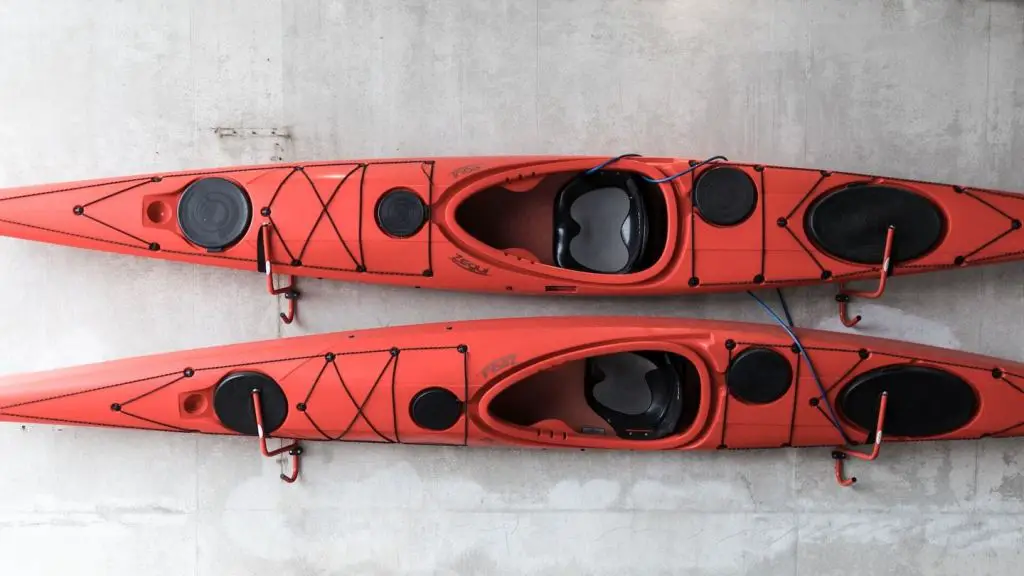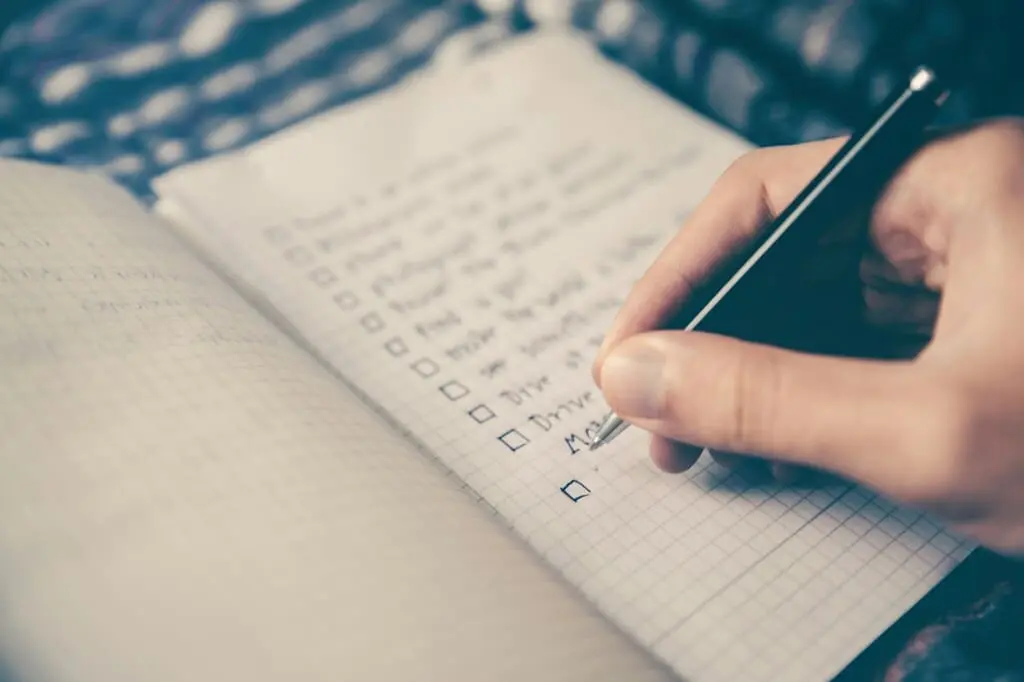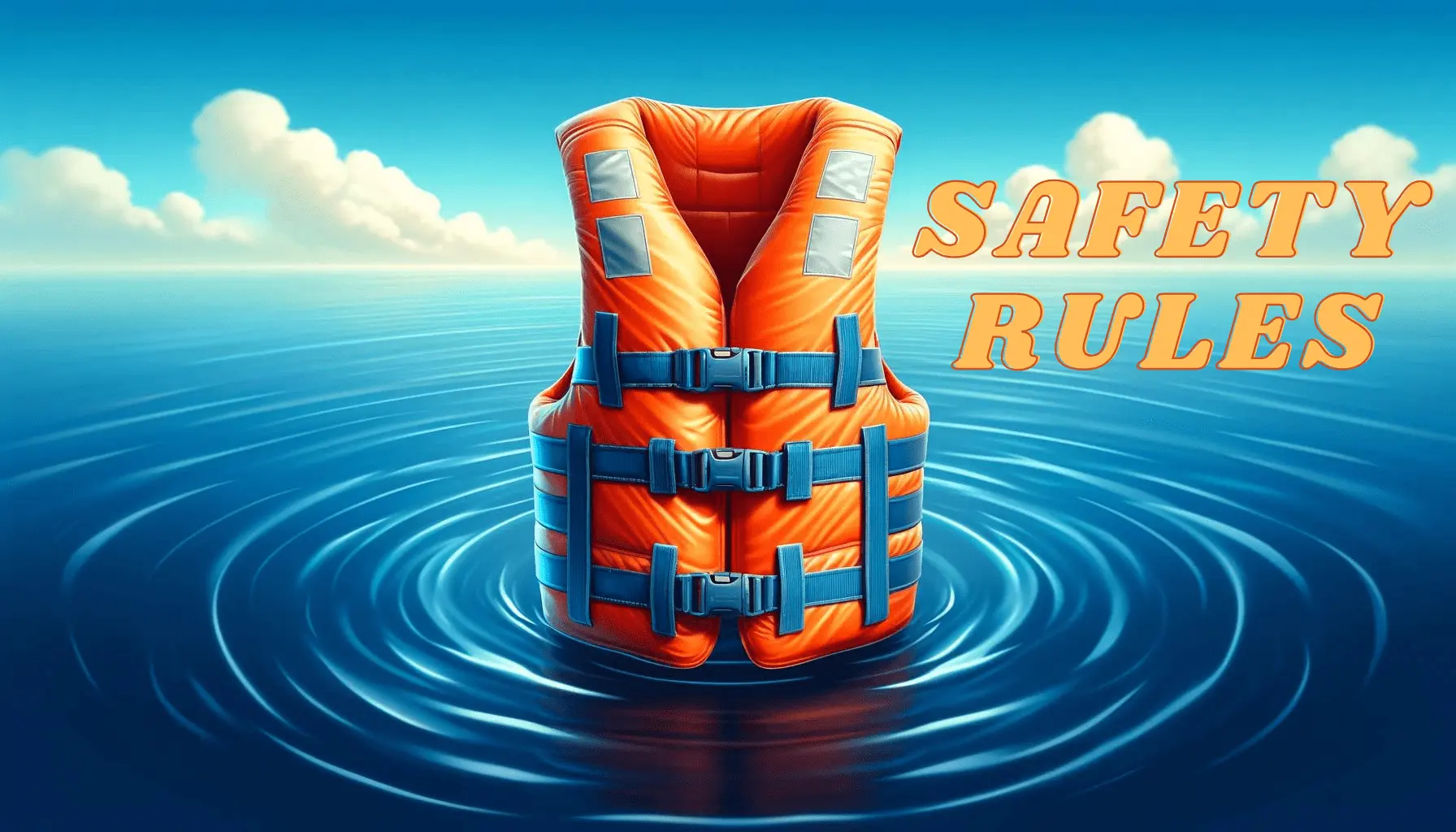An astonishing 95% of the estimated 17.8 million kayaks in the United States sit idle for the better part of the year, which begs the question – how well are these vessels being maintained during the off-season? A well-maintained kayak is not only a badge of honor for the enthusiast but a vessel primed for performance and longevity. Kayak maintenance, a critical yet often overlooked aspect of kayak care, can drastically improve the lifespan of your craft and ensure it stays in tip-top shape, ready to slice through waters at a moment’s notice.
Whether it’s a serene paddle across a quiet lake or an adventurous voyage down a bustling stream, maintaining your kayak is paramount for any experience on the water. By adhering to fundamental kayak maintenance practices, paddlers can prevent common issues that may impede kayak performance. Regular upkeep, timely repairs, and conscientious storage all play a pivotal role in the life of a kayak. It’s the difference between investing in experiences or expenses.
Let’s dive into the essential tips and strategies to keep your kayak not only sea-worthy but also poised for peak performance. From the casual weekend paddler to the seasoned explorer, these insights are sure to steer any kayak owner towards seamless sailing and enduring adventures.
Key Takeaways
- Engaging in proactive kayak maintenance significantly enhances the vessel’s performance and longevity.
- Regular cleaning and inspections can prevent costly repairs and ensure safety during your paddling sessions.
- Adept kayak care includes the use of proper materials and an understanding of storage and repair techniques.
- Understanding the importance of maintenance can lead to a more enjoyable and reliable kayaking experience.
- Implementation of eco-friendly kayak maintenance practices protects our waterways for future generations to enjoy.
- Periodic kayak care is essential for a smoother ride and reduced resistance in water.
- Adopting a systematic approach to kayak upkeep can enhance every outing on the water, regardless of skill level.
Understanding the Basics of Kayak Maintenance
Kayak maintenance is more than just a chore; it’s a fundamental aspect of kayak ownership that ensures both safety and performance. Consider it an investment in your kayak’s longevity and your enjoyment on the water. By mastering the essentials of kayak upkeep and creating a kayak maintenance checklist, you’ll be well-equipped to preserve the condition and extend the life of your vessel. Let’s dive into the crucial steps of maintaining your kayak effectively.
The Importance of Regular Cleaning
Regular kayak cleaning is critical to prevent the degradation of your kayak’s performance. Sediments, salts, and algae can accumulate on the hull, creating drag and potentially causing long-term damage if not addressed promptly. It is particularly important to thoroughly rinse your kayak after each use, especially when coming into contact with corrosive materials like saltwater. A best practice is to wash the kayak with a mild soap and water, using a soft sponge or cloth to safeguard the surface.
Key Materials and Tools for Maintenance
A well-maintained kayak is synonymous with a well-stocked maintenance kit. For effective kayak care, gather the essential materials and tools such as:
- Mild soap, specifically designed for marine applications
- Soft sponges and cloths for gentle cleaning
- Non-abrasive brushes to reach textured surfaces
- A hose for thorough rinsing
- Marine-grade kayak wax for UV protection and easier cleaning
These simple tools can significantly enhance how you maintain a kayak and contribute to its pristine condition.
Assessing and Addressing Kayak Damage
Part of maintaining your kayak includes regular inspections for any signs of damage, such as cracks, dings, or deformities. Addressing these issues can be the difference between a simple repair and a costly replacement. For polyethylene kayaks, a bit of heat from the sun or a hairdryer can rectify minor deformities, while a specialized polyethylene repair kit can be used for more pronounced damages. When in doubt, don’t hesitate to seek kayak repair services from professionals to ensure your kayak remains in ideal condition for your next adventure.
Kayak Cleaning Techniques for Enhanced Performance

Perfecting kayak cleaning techniques is about more than just keeping your vessel looking its best; it’s about optimizing for performance and ensuring long-term usability. With proper maintenance, your kayak will slip through the water with minimal drag and resistance, promoting a ‘well-oiled’ glide that skilled paddlers greatly appreciate.
Here’s a comprehensive look into maintaining your kayak through efficient cleaning practices:
- Gather the right supplies, such as a non-abrasive sponge and eco-friendly, biodegradable soap, to avoid harming marine ecosystems.
- Focus on problematic areas where water and debris tend to accumulate. This could include the cockpit, storage hatches, and the underside of the hull.
- Execute gentle scrubbing actions to remove grime without damaging the kayak’s surface.
Not only does a consistent cleaning regimen keep your kayak in prime condition, but it also provides the opportunity to inspect for potential issues. Addressing any signs of wear or damage promptly is a critical kayak maintenance tip to ensure you remain safe while out on the water.
Remember, preserving the integrity of your kayak by maintaining your kayak correctly will enhance your paddling experience and protect your investment for years to come.
Protecting Your Kayak from Environmental Stress
As a kayak owner, safeguarding your vessel from the relentless stressors of the environment is integral to its preservation and performance. Understanding how to effectively combat these challenges is key to long-term kayak upkeep.
Safeguarding Against UV Damage
Kayaks, especially those constructed from polyethylene, are vulnerable to UV rays which can lead to material degradation over time. Kayak UV protection, such as 303 protectant, is therefore not optional but a necessity. Applying protective sprays that are specifically designed to obstruct harmful UV radiation can significantly extend the life of your kayak, maintaining aesthetics and structural integrity. For optimal results, storing your kayak out of direct sunlight when not in use is an essential step in maintaining your kayak.
Combating the Corrosive Effects of Saltwater
For those who venture into briny waters, it’s crucial to recognize that saltwater can accelerate corrosion in metal components and wear on plastic and rubber parts. Immediate post-paddle washing with fresh water can’t be overstated; it’s integral to kayak maintenance and preventing corrosive damage. Beyond simple rinsing, kayak cleaning with freshwater should be thorough, ensuring no salt residue is left to wreak havoc on your kayak’s parts.
Shielding Your Kayak from Physical Impacts
Bumps and scrapes are an inevitable part of the kayaking experience, but regular kayak care can minimize their impact. Applying a marine-specific wax not only provides an additional layer of UV protection but also lessens the effects of physical impacts. This routine kayak maintenance task plays a dual role, also making subsequent cleanings easier by creating a smooth, less adhesive surface on your kayak’s hull.
Remember, kayak repair often starts before any visible damage occurs. Taking proactive steps in maintaining your kayak can prevent minor wear from turning into major repairs. With these strategies in place, you can ensure that your kayak is poised for many seasons of adventure on the waters.
The Role of Storage in Preserving Kayak Longevity

The key to maintaining your kayak and maximizing its lifespan does not end with cleaning and repairs—kayak storage plays a pivotal role. The way you store your vessel can have significant implications on its condition over time. With the right storage solutions, you can effectively combat the onset of wear and some of the most common kayak-related issues, such as UV damage and hull deformation.
While your kayak awaits your next adventure, its storage place can act as its safe haven from the harshness of the elements.
- Choose an indoor space that’s not exposed to extreme temperatures or humidity, ensuring a cool and dry environment prevents the material breakdown of kayaks.
- For outdoor scenarios, selecting a spot that’s shaded or covered will protect against the sun’s damaging rays and extend your kayak’s aesthetic appeal and functional integrity.
Kayak upkeep measures such as using kayak-specific storage racks or cradles facilitates not just orderly organization but also maintains the shape and structure of the hull. Furthermore, ensuring that the kayak is stored off the ground and provided with enough air circulation mitigates the risk of mold, which can degrade materials and create unsightly stains.
- Inspect your storage area regularly to ensure it continues to provide a secure space, free from potential sources of damage.
- Consider a custom-fitted cover that shields your kayak from dust and other airborne contaminants when not in use.
- Re-assess your storage setup periodically to cope with changes in weather, especially as seasons transition.
Kayak Maintenance: Prolonging the Life of Your Craft
The cornerstone of kayak longevity lies in steadfast commitment to kayak maintenance. Those paddling enthusiasts who adhere to regular maintenance rituals not only enhance the performance of their vessels but also contribute significantly to their durability. Engaging in such practices undoubtedly mitigates the need for costly repairs down the line.
- The initial step in extending the lifetime of your kayak involves an uncompromising pattern of thorough rinsing, especially after voyages through punishing environments like those high in saltwater. Such vigilance ensures that corrosive elements are stripped away promptly, staving off the slow degradation of kayak materials.
- Investing in eco-friendly products for maintaining your kayak emerges as a dual benefit stratagem. It garners the advantages of specialized kayak care while simultaneously underpinning efforts towards environmental stewardship.
Undeniably, incorporating these maintenance steps is a testament to the prudent mariner’s mantra: “A well-kept kayak is a long-lived kayak.”

DIY Kayak Repair Tactics to Keep You Afloat
Whether you’re a seasoned kayaker or new to the sport, understanding the basics of kayak repair is essential. Minor scratches and hull imperfections are inevitable, but addressing them promptly can save you time and costs in the long run, ensuring that kayak maintenance remains a manageable part of your routine.
Managing Minor Scratches and Hull Repairs
Dealing with minor wear and tear yourself is an integral aspect of maintaining your kayak. For small scratches, a plastic welder or a simple hairdryer can work wonders, melting the plastic slightly so it can be smoothed out. For deeper gashes, a polyethylene repair kit may be necessary. These DIY fixes not only preserve your kayak’s integrity but also maintain its appearance and performance, crucial for any enthusiast committed to kayak care.
- Inspect your kayak regularly for any new scratches or dents.
- Clean the affected area thoroughly before attempting any repairs.
- Use specific techniques for polyethylene or composite kayaks, as the materials respond differently to heat and treatment.
- For minor repairs, specialized repair kits can be a cost-effective alternative to professional kayak repair services.
When to Seek Professional Kayak Repair Services
While DIY methods are great for minor issues, significant damage requires a professional touch. If your kayak sustains severe scratches, dents, or structural damage, enlisting professional kayak repair services is advisable. These experts have the tools, knowledge, and experience to ensure that repairs are done safely and effectively, contributing to your kayak’s longevity and your peace of mind on the water.
Remember, maintaining consistent kayak upkeep and recognizing the limitations of DIY repair can significantly impact the lifespan and performance of your kayak.
No matter how meticulous you are with maintaining and repairing your kayak, normal wear and tear are to be expected. Adhering to a routine schedule of kayak maintenance and being prepared to carry out small, timely repairs are the keys to uncompromised paddle experiences. And when the situation is beyond your skill set, don’t hesitate to seek out a kayak maintenance professional. Keeping your kayak afloat and in prime condition is a blend of your care and the expertise of those who know kayaks best.
Navigating the Waters of Kayak Upgrades
When you seek to elevate your paddling experience, considering kayak upgrades can be a game-changer. From enhanced maneuverability to increased comfort, the right enhancements not only enhance kayak performance but also contribute to effectively maintaining your kayak. Let’s delve into selecting and installing upgrades that complement your on-water adventures while ensuring the long-term care of your vessel.
Enhancing Performance with Choosing the Right Accessories
Selecting the optimal accessories is paramount for both new and veteran kayakers alike. Upgrades such as ergonomic seats provide the support and comfort needed for longer excursions, while a variety of rod holders cater to the anglers seeking to optimize their fishing setup. For those looking to streamline their paddling, adaptive paddle holders ensure paddles remain secured, reducing drag and maintaining a clean deck. Marrying your specific needs with innovative kayak accessories is the cornerstone of personalized kayak care and performance.
Installation Tips for Kayak Upgrades
Proper installation is key to unlocking the benefits of your selected kayak upgrades. It is imperative to adhere to the manufacturer’s guidelines to avoid any inadvertent damage to the kayak. Use the appropriate tools for installation to ensure that these enhancements integrate smoothly without compromising the kayak’s integrity or warranty. Consider upgrades like kayak carts for their practicality in transport, as they can significantly reduce wear and tear on your kayak, thus extending its lifespan and aiding in kayak maintenance. Following these installation tips ensures that each upgrade enhances not just the kayak’s functionality, but also your overall experience on the water.
- Research and select upgrades that match your specific paddling needs and style.
- Follow the precise instructions provided by accessory manufacturers.
- Ensure you have the correct tools at hand to avoid any unnecessary damage during installation.
- After installation, test the upgrades in a safe environment to confirm their effectiveness.
Embarking on the journey of kayak upgrades is an investment in your kayak’s performance and longevity. Equipping your kayak with the right tools and adhering to these kayak maintenance tips ensures that each adventure is as rewarding and efficient as possible. Ultimately, meticulous kayak care and thoughtful upgrades result in a superior paddling experience tailored to your unique needs.
Eco-Friendly Kayak Maintenance Practices
Maintaining your kayak in an eco-friendly manner not only benefits the environment but also ensures the longevity and performance of your watercraft. By adopting sustainable kayak care methods, you become a steward of nature, preserving the very waterways you traverse. Let’s delve into how you can incorporate eco-friendly practices into your kayak care routine.
Biodegradable Products for Sustainable Cleaning
When it comes to eco-friendly kayak cleaning, the choice of cleaning agents plays a pivotal role. Opting for biodegradable and non-toxic soaps ensures that the run-off from your cleaning process doesn’t harm the aquatic ecosystem. This consideration is especially important since many traditional cleaning products contain chemicals that can be detrimental to fish and other wildlife. Sustainable kayak care starts with selecting products specifically designed to have minimal environmental impact.
Eco-Conscious Approaches to Waste and Water Management
Implementing eco-conscious practices extends beyond the cleaning products you use. Responsible waste management involving proper disposal of used materials and recycling of product packaging significantly reduces your environmental footprint. Likewise, water management practices such as using minimal water for rinsing and avoiding the introduction of pollutants into natural water bodies underline a commitment to conservation. Through these actions, kayakers can maintain their vessels while upholding environmentally responsible standards.
- Use of eco-friendly, biodegradable cleaning agents
- Responsible disposal and recycling of cleaning materials
- Practices aimed at minimizing water usage and pollution
By integrating these kayak maintenance guidelines into your routine, you bolster the health of our waterways, ensuring they remain pristine for generations of paddlers to come.
Seasonal Kayak Maintenance: Adapting to the Changing Elements
As the seasons shift, the needs of your kayak also evolve. Understanding seasonal kayak maintenance practices is crucial to ensuring the longevity and readiness of your vessel whether you’re facing the cold bite of winter or the warm embrace of summer. Kayak care strategies differ significantly with each passing season, demanding a tailored approach to preserve optimal condition and performance.
Winter Care and Preparation
When temperatures drop, kayak winter care becomes a key focus for paddling enthusiasts. Protecting your kayak from the harsh elements of winter is essential to prevent freezing and material compromise. Storing your kayak correctly during this time is not just about finding a place for it; it’s about maintaining your kayak in a state that ensures no unwanted surprises when the ice thaws. It involves:
- Cleaning thoroughly to remove any grime and debris
- Drying completely to avoid mold and freezing damage
- Applying a protective layer to ward off any potential rust on the metal elements
- Storing in a climate-controlled environment or using a cover to protect from moisture and pests
Optimizing Your Kayak for Summer Adventures
As the snow melts and warmer weather sets in, it’s time to transition into kayak summer maintenance. Before hitting the sparkling waters, ensure that your kayak is as ready for adventure as you are. This involves a meticulous inspection of your kayak post-winter storage, checking for any damage that might need attention. Key maintenance tasks for the summer season include:
- Inspection of the hull and body for any wear or damage
- Application of UV protective products to prevent sun damage
- Reapplying a fresh coat of wax for enhanced performance and protection
- Ensuring all moving parts such as rudders, pedals, and seats are in working order
The goal with kayak summer maintenance is not just to maintain, but also to optimize. It’s about fine-tuning your kayak for the smoothest and most efficient paddling experiences under the summer sun. Prioritizing kayak care during this phase allows you to enjoy those beautiful, long days on the water, secure in the knowledge that your kayak is at its best.
Creating a Kayak Maintenance Checklist for Systematic Care

Embracing a structured approach to kayak maintenance is the key to ensuring your vessel remains in prime condition for your aquatic adventures. By adhering to a specialized kayak maintenance checklist, you can establish a routine that encompasses regular kayak upkeep, identifying potential issues before they escalate into costly repairs. Let’s delve into crafting a checklist that will cover both periodic inspections and maintenance strategies to employ before and after your paddling escapades.
Periodic Inspections and Regular Upkeep
To maintain the integrity and performance of your kayak, conduct periodic inspections that look for any signs of wear and tear. Regularly examining each component not only aids in maintaining your kayak but also provides insight into areas that may require attention or repair. Here’s an outline of key tasks to include on your maintenance checklist:
- Visual inspection for cracks, dents, or hull damage
- Checking bungee cords and deck lines for elasticity and signs of fraying
- Verifying the condition of hatch seals to ensure they’re watertight
- Assessment of the rudder and foot pedals for proper function
- Inspection of screws and bolts to confirm they are securely fastened
Maintenance Before and After Paddling Sessions
Every paddling session demands its own set of maintenance rituals to guarantee your kayak’s longevity. These simple yet vital kayak maintenance tips can prevent long-term damage and uphold the vessel’s aesthetics and functionality.
- Rinse the kayak with freshwater after each use, especially when returning from saltwater excursions.
- Thorough kayak cleaning with a mild soap to remove contaminants, followed by a rinse and a complete dry.
- Application of a UV protectant spray to shield from sun damage if the kayak will be exposed for extended periods.
- Check for loose hardware and make small adjustments or repairs as needed.
- Store the kayak in a cool, dry place, away from direct sunlight.
Implementing a kayak repair routine post-paddling protects your craft and prepares it for the next journey, underscoring the significance of regular kayak upkeep.
Meticulous care not only safeguards your investment but also secures your peace of mind on the water. Therefore, consistently maintaining your kayak with this checklist approach is indispensable for any paddling enthusiast.
Conclusion
Masterful kayak care is the anchor of durability and peak performance, vital for anyone who takes to the waters with a paddle. Adhering to the kayak maintenance tips laid out in this guide can significantly enhance kayak longevity, ensuring that your craft remains in top condition season after season. It’s the accumulation of routine care—scrupulous cleaning, meticulous inspections, and prompt repairs—that forms the bedrock of a resilient kayak, upholding both safety and performance.
Embracing eco-friendly practices is more than a nod to environmental sustainability; it’s a commitment to preserving the very ecosystems we explore and cherish as paddlers. Moreover, seasonal kayak care is paramount; what seems like leisurely preparation shields your kayak against the relentless cycle of weather and time, empowering adventurers for the long haul. As kayak enthusiasts, we wield the power to mold our experiences through proactive upkeep, transforming seemingly mundane maintenance into a ritual that reveres the spirit of paddling.
Ultimately, each stroke taken while paddling echoes the sentiment of proper maintenance—a seamless melding of effort and care that propels us forward. May your adventures across the waters be as enduring and fulfilling as the thorough care you invest in your kayak. Navigate with confidence, knowing that the guide to maintaining your vessel is now an ingrained part of your journey on the water.
FAQ
How often should I clean my kayak?
Ideally, you should clean your kayak with mild soap and water after each use, especially if it has been in saltwater or dirty environments. This helps prevent the buildup of sediments, salts, and algae, which can affect your kayak’s performance.
What materials do I need for basic kayak maintenance?
The essential materials for kayak maintenance include mild soap, a soft sponge or cloth, non-abrasive brushes, and a hose for rinsing. For added protection, consider using a marine-grade kayak wax with UV protection.
How do I address minor damage to my kayak?
For minor scratches or dents on a polyethylene kayak, you can use a heat gun or hairdryer carefully to re-shape the affected area. Small cuts or holes can be fixed with a polyethylene repair kit. Always follow the manufacturer’s instructions for the best results.
What steps should I take to protect my kayak from UV damage?
Store your kayak away from direct sunlight and apply UV protectant products to the hull. This will help prevent the kayak from becoming brittle or fading over time, especially with kayaks made from polyethylene.
How should I store my kayak to maintain its shape and longevity?
Store your kayak in a cool, dry place away from direct sunlight. Indoor storage is ideal, but if you must store it outdoors, choose a shaded area, use a protective cover, and ensure the kayak is supported evenly to maintain its shape.
Can I perform kayak repairs myself?
Yes, many minor repairs, such as fixing small scratches and hull imperfections, can be done at home using a plastic welder, hairdryer, or polyethylene repair kit. However, for significant structural damage, it’s best to seek professional kayak repair services.
When should professional kayak repair services be sought?
If your kayak has significant damage such as deep cuts, large dents, or issues that affect its structural integrity, it’s time to consult a professional kayak repair service to ensure safe and reliable performance on the water.
How do kayak upgrades improve performance?
Upgrades like ergonomic seats, new rod holders, or improved paddle mounts can enhance comfort and efficiency on the water. It’s important to select accessories that match your needs and properly install them to avoid damaging your craft.
What are some eco-friendly kayak maintenance practices?
Use biodegradable and non-toxic cleaning agents, responsibly manage waste and water, and engage in activities that minimize environmental impact, such as recycling product packaging.
What specific maintenance is required during winter and summer?
In winter, store your kayak in a clean, dry place to prevent freezing and material damage. Come summer, inspect the kayak for wear and apply any required maintenance, such as UV protection or wax, for a smooth experience.
What should be included in a kayak maintenance checklist?
Your checklist should cover routine cleaning, checking for and repairing damage, applying protective coatings, and inspecting your kayak before and after use, especially when it has been exposed to harsh elements.
How does regular maintenance before and after paddling sessions help?
Performing regular maintenance, like rinsing off contaminants and drying your kayak after use, helps prevent long-term damage, such as corrosion or mold buildup, ensuring your kayak is always ready for your next adventure.



